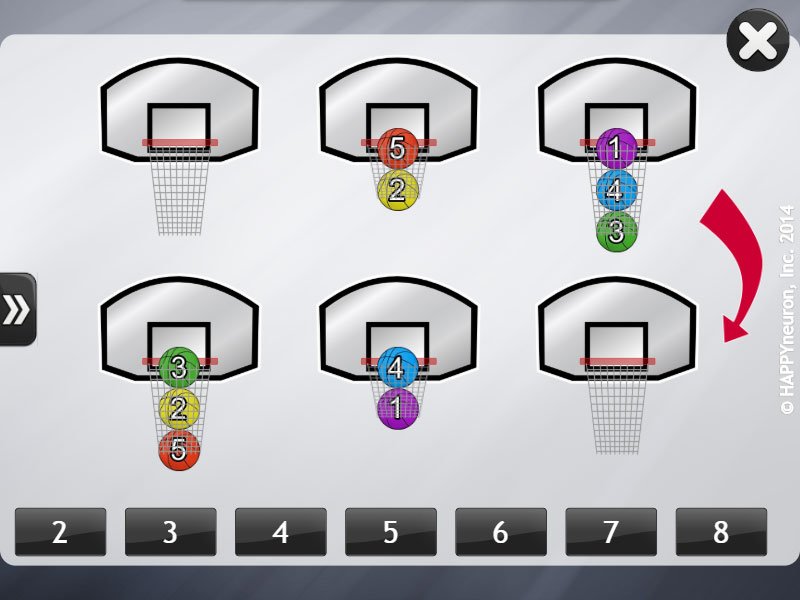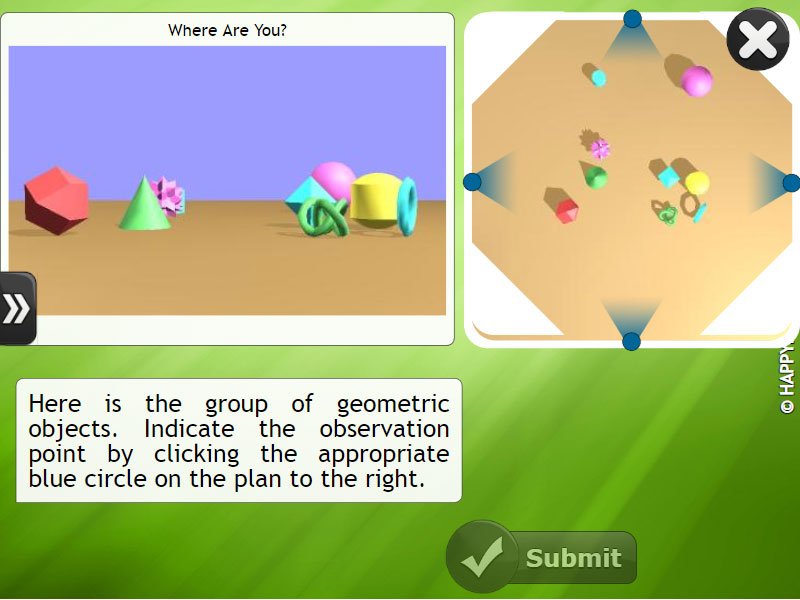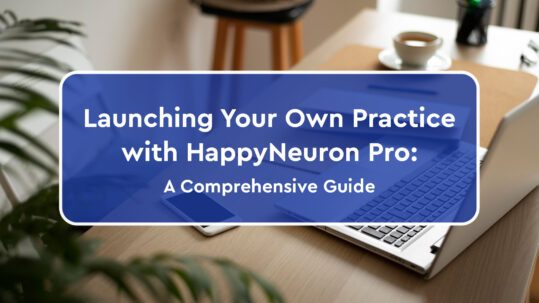5 HappyNeuron Pro Exercises That Help with Goal Setting
Goal setting is a therapy goal many clients work with a therapist on. In this blog post, we discuss 5 HappyNeuron Pro exercises that you can use with your client to practice cognitive skills needed for effective goal setting.
1. Basketball in New York
A popular exercise for executive functioning, this exercise tasks the client to make a set of basketballs above match the configuration of basketballs below. If your client does not look at the configuration and moves haphazardly, they will choose the incorrect number of moves needed to solve the problem. For goal setting, this exercise trains your client to step back and examine the big picture of what they want to achieve while teaching them the skills needed to dissect what is needed to achieve a specific goal. This exercise is great for clients who have big ambitions, but get easily distracted or lose focus during the goal setting and implementation process.


2. Chunking
In this exercise, your client must memorize the shapes, colors, and placement of objects within a grid and later place each shape in the correct grid square. The goal of this exercise is to teach your client how to “chunk” information for later recall. For goal setting, this exercise helps your client practice the strategies they need to remember what they need to be doing in order to reach their goal. It is easy to forget what the task is at hand, but this exercise will help your client learn to retain information in a meaningful way to later apply it in their daily life.
3. Points of View
Points of View targets visual-spatial skills while your client must examine a scene and locate themselves within a birds-eye view of a scene. Your client must use information from their view as well as examine the birds-eye view scene for contextual clues that can help locate them in space. While abstract, this exercise can help your client learn key strategies such as comparing information at hand and recentering themselves in space. For goal setting, these strategies will help your client be able to examine the current situation that they wish to change and help them think about where they currently stand and where they want to be.


4. Under Pressure
In this processing speed exercise, your client must determine the relative position of two stimuli as quickly as possible. This task is great for building not only processing speed skills, but stress tolerance. Stress can easily deter a person from reaching their goals when a situation becomes more difficult than expected or there is a crunch for time to achieve the goal. This exercise will help your client learn to make quick decisions while also getting accustomed to functioning efficiently during times of stress.
5. Writing in the Stars
Part of being good at accomplishing goals is knowing how to target easy wins and strategically go after more difficult ones. In this exercise, your client is tasked to solve a star crossword puzzle using a word bank. While some of the word choices may be obvious for your client, your client must examine the puzzle, the words available, and piece together which words connect with one another. Like goal setting, your client may solve blanks where word choices are easier to determine first and save the more difficult ones for later as the puzzle becomes more complete. This can help your client learn how to prioritize which components of their goals they want to achieve first and how they fit in achieving the goal as a whole.

Goal setting relies on a variety of cognitive skills and strategies that can be practiced through different cognitive activities. By using these 5 HappyNeuron Pro exercises, you can teach your client the skills that they need to break down a problem into manageable pieces, identify which pieces they need to solve first, understand how all the components work together to help them achieve their goal, and help them see the bigger picture of how their goal will help them in the long run.
While these activities practice essential cognitive skills, it is your job to help your client transfer their practice to their daily life. One way to do this is by having your client perform relevant bridging activities related to their goal. These bridging activities will help your client connect their cognitive practice to their daily life, and help you see where they are struggling in translating their practiced skills. Looking for bridging activities? Try these bridging activities with your clients today.









